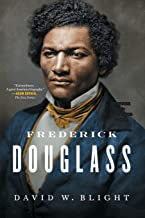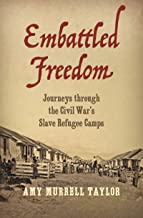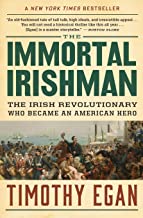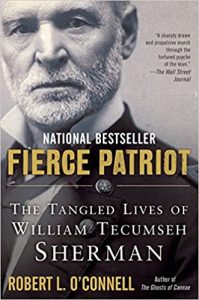Biography: No Longer the Stepchild of Civil War History
For much of the twentieth century, biography was a genre ignored or demeaned by many academic historians. Traditional cradle-to-grave biographies focused on the so-called “great men of history.” They consigned women, immigrants, people of color, and lesser known figures to the periphery. Treated as bit players in epic historical dramas like the American Civil War, these groups were denied recognition and agency, appearing tangentially as mere chess pieces in military matches between Grant and Bragg or McClellan and Lee.
The profusion of post-war autobiographies like the memoirs of Grant, Sherman, and other key figures, shaped Civil War historiography, and not always in a good way. Any work that involves self-representation, especially those written many years after the events they describe, should be viewed with a healthy dose of skepticism. Even in the Official Records, the holy grail of Civil War primary sources, reports were often written with future reputation and self-promotion in mind. Private letters, especially those written to confidents like family members and contemporary first-hand accounts by ordinary soldiers, must be used to corroborate autobiographical writing.
Thankfully, recent generations of Civil War scholars highlight contributions made by women on the home front and in the nursing corps, enslaved people effecting their own liberation, recent immigrants fighting for universal human rights, and second tier figures playing crucial roles at critical moments. Rather than belittling such actors as insignificant in the grand sweep of events, recent studies have enhanced our understanding of America’s watershed historical moment by broadening its context, adding nuance and complexity, and challenging us to think more holistically about a period that transformed our country and the world. Many historians inside and outside the academy are using a biographical approach to accomplish this.
Amy Murrell Taylor, in her award-winning Embattled Freedom: Journeys through the Civil War’s Slave Refugee Camps, frames her narrative around the experiences of several key characters. She uses a vast array of primary sources to paint a vivid picture of family life among refugees from slavery. Given the challenges of 19th century Black history, Taylor’s work offers an inside glance into the war’s greatest mass migration. [1]
Megan Kate Nelson accomplishes a similar goal as Taylor in her groundbreaking The Three-Cornered War: The Union, the Confederacy, and Native People in the Fight for the West. Nelson’s nine key characters transport readers to a confusing struggle in a physical landscape that seems almost foreign to the Civil War most of us imagine. Freed from her former academic career constraints and published by a trade press, Nelson indulges her readers with a narrative approach that is fast-paced, employing short chapters and vivid imagery. This allows her to make subtle arguments about the importance and impact of struggles to control the Arizona and New Mexico territories while engaging both academic and popular audiences.[2]
Perhaps the best indicator of biography’s rise to the forefront of the history profession are the recent winners of the Pulitzer Prize for history. Three of the last five honorees, Caleb McDaniel, David Blight, and T.J. Stiles, won this prestigious award for biographies of Civil War period figures. McDaniel’s prize is especially significant, given that his primary subject is an obscure enslaved woman named Henrietta Wood. Her story is not only astounding, but reveals new insights on enslavement while addressing current issues like reparations. Great white man biographies, on the other hand, offer a narrow view of the Civil War experience, skewing our perspective. Today’s scholars use biography as a tool to take us well beyond generalship, battles, and bullets.[3]
Most of the best current biographies are published by the large trade presses or by university presses with a significant trade presence. A related trend in Civil War historiography is the success of writers from outside academic circles. One outstanding example is journalist Timothy Egan’s terrific biography of Thomas Meagher, The Immortal Irishman: The Irish Revolutionary Who Became an American Hero. Egan’s prose is lyrical, his pacing quick and exciting, his research thorough, and his grasp of the impact of transatlantic radicals on the American Civil War firm. One can hardly resist reading further when encountering Egan’s opening sentence: “Look to the edge of the swollen Missouri in Montana Territory, where the longest river on the continent holds a blush of twilight, to see what becomes of an Irishman just before he disappears.”[4]
What makes biography so popular with readers and so useful to historians who study the Civil War period? In a word, intimacy. In a genre like history, where large scale, sweeping sequences of events with global implications often dominate the story line, it is difficult to remember that the thoughts, judgments, and actions of individuals, along with the collective will of thousands or even millions of their followers, often “make” history. Readers enjoy putting themselves in a central character’s shoes, experiencing a moment in history through their eyes and imagining what it must have been like to live in their times. Biographers enjoy the luxury of delving deeply into their subject’s life, versus merely chronicling their actions in a larger context. Historical figures become real people. For example, it is one thing to analyze William T. Sherman’s performance in a battle or campaign, but quite another to really understand how he developed his talents, dealt with challenges and setbacks, and felt about his own performance as a military leader. Adding contemporary accounts by his peers, officers, and soldiers gives us a much more comprehensive picture of him as a person.
My own work uncovers obscure historical figures with compelling stories and brings them back to life through the medium of biography. In some cases, as in the study of free Blacks or enslaved peoples, there is not enough primary source data available to construct more than a short article or essay. With others, second or third tier historical personalities connect to prominent events, adding to our understanding of key people and moments in American history which might otherwise never surface. For example, both of my book length biographies revealed new details about Abraham Lincoln, certainly the most studied man in American history. Such tidbits remain buried in an attic or archive until some enterprising historian decides to forego commercial success and write about these little-known people. The joy of uncovering the lost third speech at Gettysburg or a hand drawn map of the battle of Stones River is a valuable reward for the drudgery of hundreds of hours of research.
There are many professional and amateur historians digging in the archives to find exciting and meaningful untold stories. The “biographical turn” in Civil War scholarship holds great potential for historians to combine these personal stories with other primary sources to bring us all closer to one of the signal events in our short history as a nation. The subject herself need not be seen as typical or representative of some broad historical trend or narrative; but collectively, these intimate insights enrich our understanding, broaden our sometimes narrow military history focus, and use personal perspective to further explore, contextualize, and even help confirm or correct or interpretations of past events.[5]
As more and more well researched and ably written Civil War studies hit the market, biographical techniques will help bring new readers into the field and help the Civil War remain relevant to future generations.
_ _ _ _
David T. Dixon is the author of The Lost Gettysburg Address. His new book, Radical Warrior: August Willich’s Journey from German Revolutionary to Union General, was recently published by The University of Tennessee Press.
Sources and Notes:
[1] Amy Murrell Taylor, Embattled Freedom: Journeys through the Civil War’s Slave Refugee Camps (Chapel Hill: Univ. of North Carolina Press, 2018).
[2] Megan Kate Nelson, The Three-Cornered War: The Union, the Confederacy, and Native People in the Fight for the West (New York: Scribner, 2020).
[3] W. Caleb McDaniel, Sweet Taste of Liberty: A True Story of Slavery and Restitution in America (New York: Oxford University Press, 2019). David W. Blight, Frederick Douglass: Prophet of Freedom (New York: Simon & Schuster, 2018). T.J. Stiles, Custer’s Trials: A Life on the Frontier of a New America (New York: Alfred A. Knopf, 2015).
[4] Timothy Egan, The Immortal Irishman: The Irish Revolutionary Who Became an American Hero (New York: Houghton Mifflin Harcourt, 2016), xi.
[5] For an in-depth discussion of the role of biography in history, see Hans Renders, Binne de Haan, and Jonne Harmusa, eds., The Biographical Turn: Lives in History (New York: Routledge, 2017).





Mr. Dixon–thanks for this article. In a time when many walls are coming down and many ceilings are being broken, I am glad to be part of that effort in history. The last part of the 19th century is filled with wonderful men and women whose stories need to be told. Such characters! Understanding them helps with an overall understanding of their time period, and ultimately with our own time.
Thanks Meg.
Excellent article. Raphael Semmes prefaced his Memoirs of Service Afloat with the following: “The cruise of a ship is a biography. The ship becomes a personification. She not only, ‘walks the waters like a thing of life,’ but she speaks in moving accents to those capable of interpreting her.” Semmes consciously applied autobiographic techniques to his tale of the CSS Alabama and to great effect. Following his example, I employed biographic principles to my study of the CSS Shenandoah cruise, titling the book “A Confederate Biography.” We cast the ship as a central character in a life story through which the collective experiences of her officers and sailors provide intimate portraits of the conflict. They can be highly effective techniques as you describe.
Thanks Dwight. Your personification technique is both interesting and effective.
Nice article, to a point. I regret Dixon feels the need to denigrate the historiography which preceded that of his current fascination with the obscure and peripheral. Hyperfocusing on single subjects and then attempting to draw elaborate general conclusions is a tad hubristic. It follows the trend of many PHd theses which tell stories that are arguably not more “holistic” but certainly more objectively insignificant. With all due respect, however interesting the story of an enslaved woman is, trying to tie it to modern reparations theory is comical. And in the grand story of the Civil War and the liberation of a people, I would argue that Grant and Sherman’s armies, led by two of those belittled “great white men”, accomplished more than all of Fred Douglas’s speeches, as significant as they were.
Thanks for your comments a John. I think some scholars like Gary Gallagher might agree with some of your points about the relative importance of the battles and the highest ranking generals. Certainly there needs to be a balance and I am advocating for that balance.
David – I rarely comment, but I had to thank you for this post! I’ve enjoyed reading all of the books you have mentioned. Your post is great reminder that history sits at an intersection where people act on events and events act on them. Telling the story of women, immigrants, and people of color is a necessary task for historians seeking to develop a complete picture of 19th Century America.
Appreciate that, Cameron.